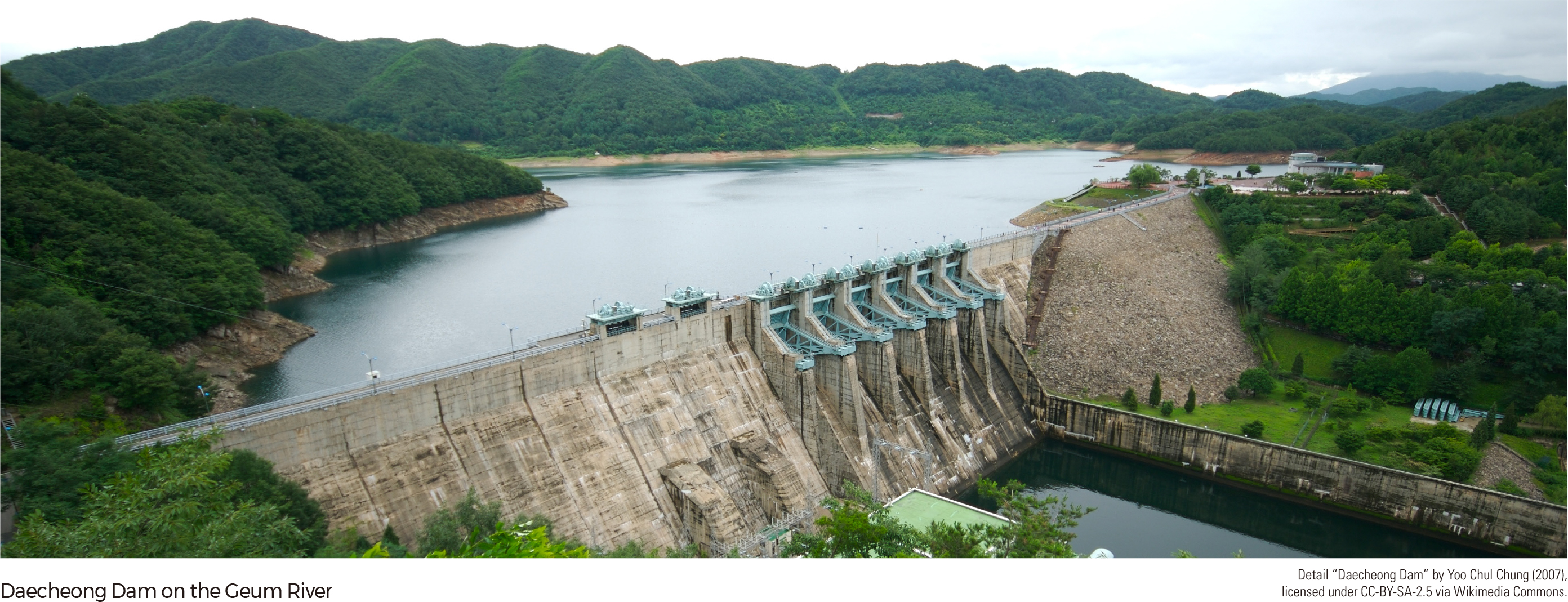Comprehensive Edition 2022
Up until the 1950s and 1960s, most rivers in Korea were in their natural form. However, with the rapid urbanization in the 1970s, many tributaries were covered and meandering channels straightened. As environmental issues gained attention in the 1990s, various improvement projects—such as the construction of waterfront parks and promenades—were initiated along rivers. In the 2000s, the concept of improvement evolved beyond the simple construction of parks to recognize the ecological and scenic conservation value of rivers for ecosystems and humans.
The total water use of Korea increased more than six times from 5.12 billion m3 in the 1960s to 33 billion m3 in the 1990s. This steep rise can be attributed to population growth, economic advancement, increased industrial development, and an increasing number of irrigation facilities. Accordingly, channel flow maintenance also increased to protect water quality, ecosystems, and landscapes. Since the 2000s, however, the rate of increase of water usage has slowed.
In 2014, agricultural use accounted for the largest proportion of total water use at 40.9%, followed by channel maintenance flow (32.5%), domestic use (20.4%), and industrial use (6.2%). Domestic and industrial water usage has remained about the same since 1998, while agricultural use has experienced a decrease over the same time. As of 2011, the Hangang watershed was the largest consumer of water at 5.23 billion m3, followed by the Nakdonggang watershed (5.1 billion m3), Geumgang watershed (2.61 billion m3), Yeongsangang watershed (1.5 billion m3), and Seomjingang watershed (0.9 billion m3).
The proportion of domestic water consumption is highest in the populous Hangang watershed, which includes Seoul. Domestic water consumption in the Hangang basin was the highest at 63.4%, while agricultural and industrial use accounted for 31.7% and 4.9%, respectively. For all other watersheds, agricultural use accounted for the highest consumption, followed by domestic and industrial water use. Large industrial complexes contribute to high industrial water use in the Nakdonggang watershed (15.1%), while a smaller population and fewer industrial facilities mean agricultural consumption dominates in the Seomjingang watershed (84.8%). |




